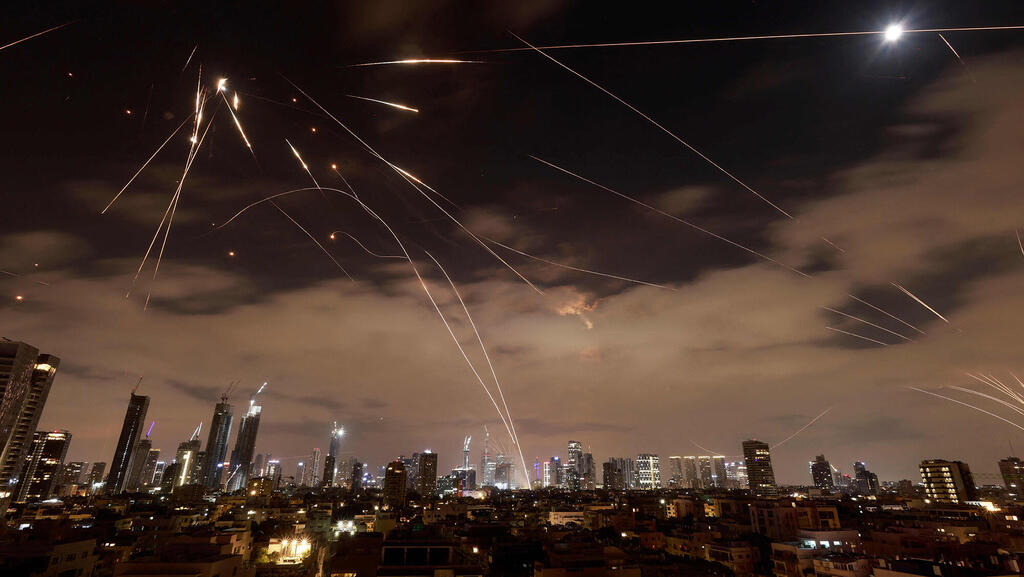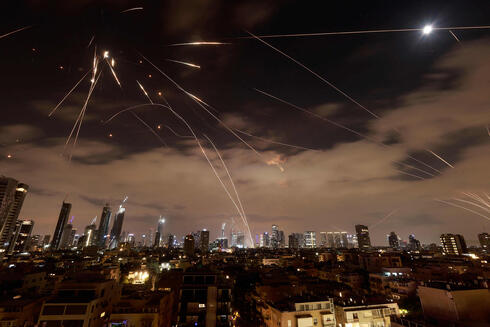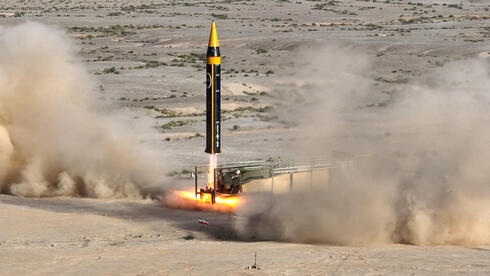
Israel manages missile interception economy amid ongoing Iranian barrages
With interceptor stocks under pressure, defense officials balance firepower with strategic conservation.
The missile barrages Iran has launched at Israel’s home front since the outbreak of war late last week, and the uncertainty over whether they will continue, are forcing the IDF and the Air Force’s air defense command to adopt a missile defense strategy rooted in what senior officials call an “interception economy.”
Now in its sixth day, the war between Israel and Iran has already prompted the defense establishment to adopt a selective interception policy. This shift came early, during the first two days of intense attacks, and is driven by both operational necessity and strategic planning: preserving interceptor stocks for a prolonged campaign.
“Managing arms inventory is a critical component of air defense,” said former Air Defense Commander Brigadier General (res.) Ran Kochav in a conversation with Calcalist. “This applies not only to Iron Dome interceptors, which are considered relatively cheap and produced in large quantities, but also to more expensive systems like Arrow 2, Arrow 3, and David’s Sling. That phase is already here.”
This so-called "interception economy" relies on a classified matrix of indicators. These include population density in the projected impact zone, potential for casualties and infrastructure damage, and the presence of strategic assets essential to military operations or economic continuity.
“If a missile is heading for Nahariya and can be intercepted by any of our systems - Arrow 2, Arrow 3, David’s Sling, or Iron Dome - we’d prioritize using the Iron Dome, which is more readily available,” Kochav explained.
Since the war began, Iran has launched an estimated 350–400 ballistic missiles at Israel, many carrying warheads weighing several hundred kilograms. According to Israeli defense sources, roughly 90% of those were intercepted, mostly by Arrow 2 and Arrow 3 systems. However, several missiles did breach Israel’s layered defenses, causing significant destruction in the center of the country and the Haifa region, resulting in the deaths of about 25 people.
A senior defense source told Calcalist that “if Iranian launches continue, we may see an increase in leakage. We are managing risk to protect red lines in interceptor usage. Interceptors are not an infinite resource.”
The IDF has not disclosed how many interceptors remain. What is clear is that since the October 7 war began, thousands of interceptor missiles of various types have been launched on multiple fronts. Rafael and Israel Aerospace Industries (IAI), which produce Iron Dome, David’s Sling, and Arrow systems, have significantly ramped up production.
Related articles:
Arrow 2 missiles currently in use are from old stock and are no longer in production. IAI now focuses on Arrow 3 and is in advanced development of the Arrow 4. The price of an Arrow 3 interceptor is estimated at $2.5 million. In recent months, the Ministry of Defense placed a massive, multi-billion-shekel order with IAI for additional Arrow 3 units. IAI is also building Arrow 3 missiles for the German Air Force, with first deliveries expected later this year under a €3.5 billion agreement, Israel’s largest defense export deal.
Meanwhile, Rafael and the Air Force have expanded deployment of the David’s Sling system, even though it was not initially designed to intercept long-range ballistic missiles like those used by Iran. Calcalist has learned that recent upgrades to David’s Sling have enabled successful interceptions of Iranian missiles.
Iron Dome interceptors are also used in a secondary role: to destroy fragments of ballistic missiles already intercepted by higher-tier systems, further reducing damage on the ground.
The U.S. is contributing to Israel’s defense as well. Two THAAD batteries deployed by the U.S. military in recent months form an additional protective layer, while SM-3 interceptors launched from Aegis-equipped destroyers in the Mediterranean are also part of the defense effort.
Despite the scale of Iranian missile attacks and the visible destruction caused by a small number of missile penetrations, Israeli officials say civilian casualties remain significantly lower than worst-case projections. Prior to the conflict, IDF assessments presented to the cabinet envisioned between 800 and 4,000 deaths in a massive Iranian barrage scenario. "We may still be in the early stages of this war," the IDF noted. “But today, we are only at 10% of even the mildest scenario. That could change with a single deadly strike, but so far, the results are encouraging.”
Since establishing near-total air superiority over Iran, Israeli fighter jets and drones have been targeting missile launch sites preemptively, substantially reducing the number and frequency of incoming barrages. Most of the missiles fired so far appear to be derivatives of the Shahab-3 class, including the Emad variant.
Iran, however, has not yet used its most powerful long-range missiles, including the Khorramshahr-4, capable of carrying a one-ton warhead to any point in Israel, or its long-range cruise missiles with a range of up to 1,700 km. “They don’t have many Khorramshahr-4 missiles,” one Israeli missile expert told Calcalist. “They may be saving them for later stages.”
According to the expert, Iran’s ability to manufacture new missiles has suffered recent blows, including Israeli strikes in last October's operation, which targeted key missile infrastructure, such as planetary mixers used to prepare solid fuel. Solid-fueled missiles are harder to detect and quicker to launch, making them a critical threat.
Despite this, the Home Front Command has not altered civilian defense protocols. Standard shelters remain the primary protection for the public. Earlier this week, two people were killed in Petah Tikva when an Iranian missile scored a rare direct hit on two safe rooms. While such hits are extremely uncommon, a senior officer noted that only shelters with three-meter-thick reinforced concrete could reliably withstand a direct strike. Most still offer substantial protection against nearby detonations.

